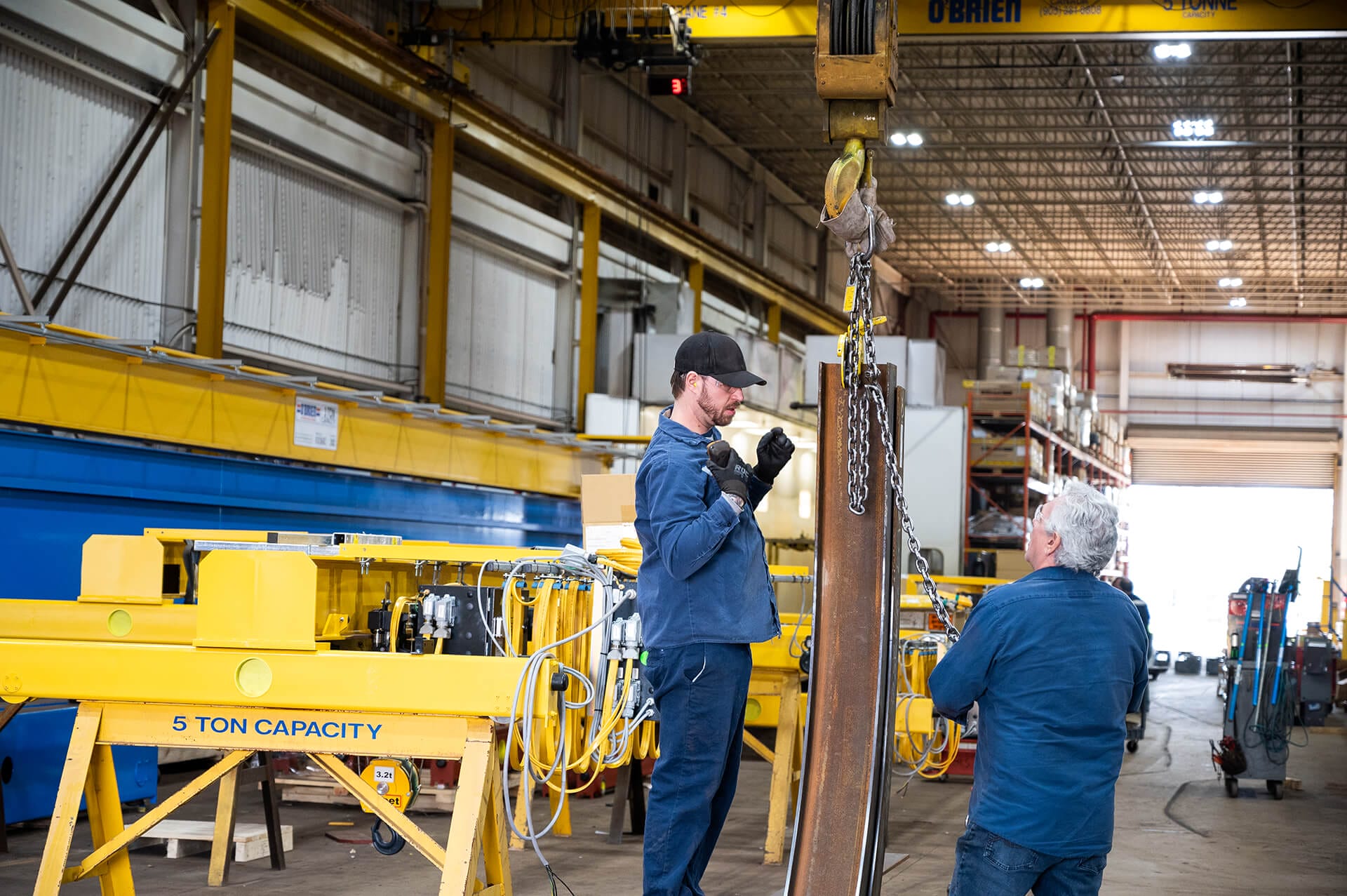
What is the difference between a chain lever hoist and a hand chain hoist? If you’re not an expert in the world of hoists, it can be easy to get confused.
Both are manual chain hoists, meaning the lifting power is provided by the operator vs. supplied by electricity. While electric hoists and pneumatic hoists (or air hoists) are excellent at the repeated lifting of the heaviest loads, manual chain hoists are ideal for their combination of portability and affordability.
What’s in a Name?
Searching for information on hoists can be confusing, as they’re called by many different names. While there may be subtle differences between each term, in general:
- Chain lever hoists can also be referred to as lever chains, ratchet lever hoists, pull-lift hoists, or simply “lever hoists”.
- Hand chain hoists can also be called chain block hoists, chain fall hoists, block and tackle hoists, or simply “hand hoists”.
What is the Difference Between a Chain Lever Hoist and a Hand Chain Hoist?
Both hoists use human power to lift the load. The key difference is that a chain lever hoist includes a lever (or ratchet) to hoist the load. While hand chain hoists can lift loads up and down, chain lever hoists can be used to shift loads both vertically AND horizontally.
Elements of a Chain Lever Hoist
Options for a chain lever hoist are similar to any manual hoist:
- Chain configuration: single or double-fall – the “fall” is the number of chains that attach to the lifting chain hook supporting the load. The simplest, the single fall chain, is typically used for lighter loads, while a double-fall chain employs two chains, making it able to lift heavier loads.
- Chain material: steel or aluminum – chain lever hoists are typically manufactured from steel or aluminum. Steel is typically more durable, but heavier. Aluminum is a great choice for clean environments, and the lighter material makes it an ideal choice for jobs where the hoist needs to be moved frequently.
- Hook options: swivel or fixed mount – swivel hooks are most common. As the name implies, the hook swivels, making it easier to attach the load, making it suitable if you are lifting different items in different locations. A fixed mount hook is ideal if you are lifting similar items repetitively.
Chain Lever vs. Hand Chain Hoist – Which is Right For You?
So which type of hoist will be best for your business?
Choose a chain lever hoist if you need to move lighter loads both vertically and horizontally.
Choose a hand chain hoist if you need to lift heavier loads, and especially in tight spaces.
While this may seem like a simple choice, when you’re purchasing any specialty product, it’s good to talk to an expert about your options. The hoist experts at O’Brien Lifting Solutions can help. We carry Kito Canada manual hoists – some of the toughest hand hoists in the business, and we can provide you with options on functionality and price to help your business operate at peak efficiency.
The Right Choice, the Best Selection – O’Brien Lifting Solutions
Whether you are looking for a new or replacement chain lever hoist, a powered hoist, or just want to get a sense of selection and price, you can count on the experts at O’Brien Lifting Solutions to provide trusted advice and support for your business. With over 60 years in the business, we’ve seen it all, and bring that experience to the table with everything we do. We also carry one of the largest parts inventories in North America, meaning once you’ve made your choice, we can get you up and running FAST.
Call O’Brien at 1-866-939-4541, or request a quote online.
